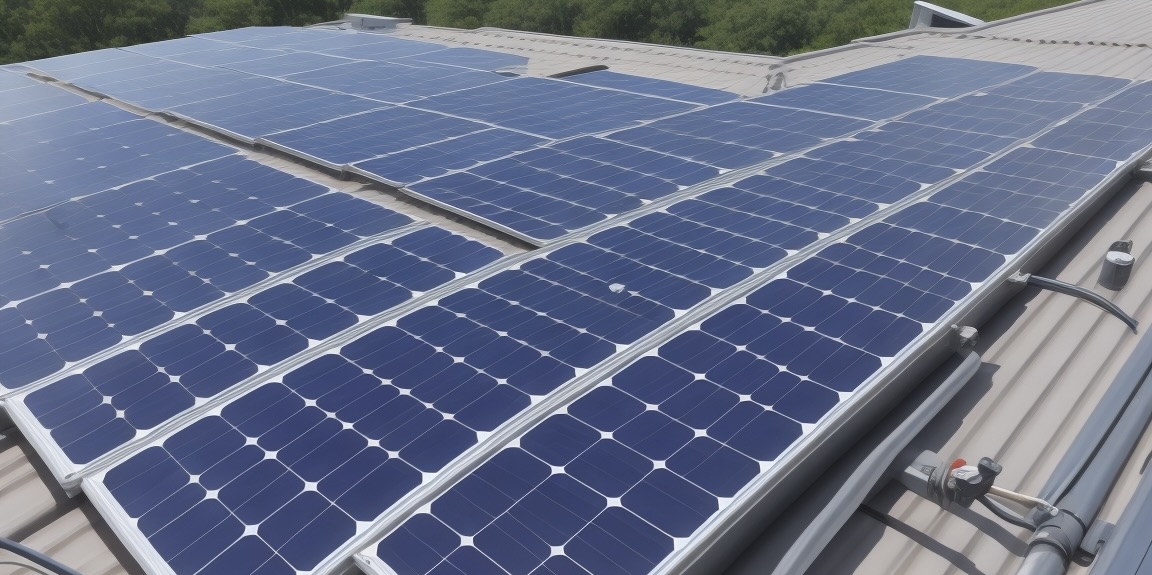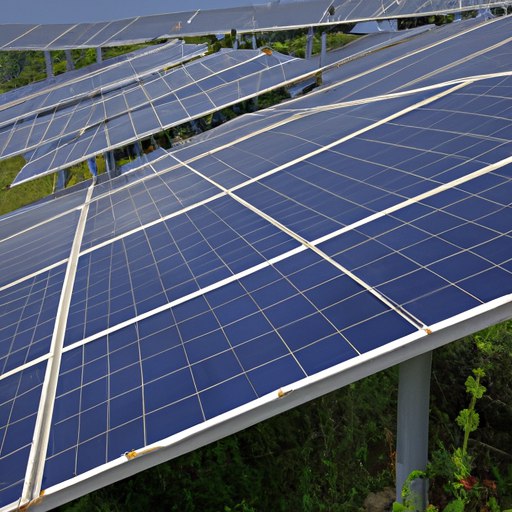The dominance of traditional crystalline silicon solar panels has undergone a remarkable transformation. The landscape of the industry has been reshaped by the emergence of thin-film solar cells, representing a profound advancement. Unlike their predecessors, these thin-film cells bring a host of benefits to the table. Their lightweight and flexible nature presents a paradigm shift in design and functionality. Notably, these cells can seamlessly integrate into diverse surfaces, ranging from windows to clothing, opening up novel avenues for solar energy utilization.
The significance of this innovation transcends the realm of traditional rooftop installations. The ability to embed solar technology into everyday surfaces redefines how we envision solar energy applications. Imagine windows that not only allow natural light to filter through but also generate energy. Visualize clothing that can capture solar power, enabling wearable technology with an eco-friendly twist. Thin-film solar cells dissolve the boundaries between conventional solar panels and the objects we encounter in our daily lives.
This transformative trajectory doesn’t just stop at convenience and aesthetics. The integration of solar cells into unexpected platforms underscores the adaptability and resilience of renewable energy solutions. As thin-film technology continues to evolve, we’re witnessing a shift from a centralized energy generation model to a decentralized, interconnected energy fabric. This decentralization empowers individuals and communities to take charge of their energy needs, fostering a sustainable future that is seamlessly woven into the fabric of our lives.

Boosting Efficiency with Tandem Solar Cells
For decades, scientists and researchers have been tirelessly working to enhance the efficiency of solar panels. The quest for higher energy conversion rates has led to remarkable strides in the field of photovoltaics. Among these advancements, tandem solar cells, often referred to as multi-junction solar cells, have emerged as a beacon of progress. Their impact on solar energy efficiency is nothing short of revolutionary.
Tandem solar cells, as their name suggests, involve the strategic layering of different photovoltaic materials. This ingenious approach allows these cells to capture a wider spectrum of sunlight, effectively optimizing energy absorption. Each layer of material is designed to absorb a specific range of light wavelengths, thereby ensuring that a greater portion of the solar spectrum is converted into electricity. This dynamic process results in a substantial boost in overall efficiency, marking a pivotal moment in solar technology.
The implications of this breakthrough are profound. By harnessing a broader range of solar energy, tandem solar cells push the boundaries of what was previously thought possible. This heightened efficiency directly translates into increased energy production for a given surface area of solar panels. As a consequence, solar power becomes an even more attractive proposition, not only for large-scale industrial installations but also for smaller residential applications.
The versatility of tandem solar cells further expands their potential impact. With the ability to capture a wider spectrum of light, these cells are particularly well-suited for locations with varying weather conditions. Cloudy days or indirect sunlight can still contribute to meaningful energy generation, making solar power a viable option even in regions that might not have been considered optimal before.
The integration of tandem cells into the urban landscape presents an exciting prospect. As urbanization continues to rise, space becomes a premium. Tandem solar cells offer a higher energy yield per unit area, making them an ideal choice for urban environments where available space for solar installations might be limited.
Perovskite Solar Cells: A Quantum Leap
Perovskite solar cells have taken the world of renewable energy by storm, standing out as one of the most captivating and promising innovations in recent times. These solar cells don’t just offer incremental improvements; they represent a quantum leap in the pursuit of efficient and accessible solar technology. Their emergence has triggered a wave of excitement within the scientific and energy communities and for good reason.
At the heart of perovskite solar cells lies their remarkable energy conversion efficiency. These cells have showcased the ability to convert sunlight into electricity at rates that have left experts astounded. Such high-efficiency levels not only contribute to maximizing energy production but also hold the promise of reducing our reliance on conventional energy sources. This efficiency boost alone places perovskite cells at the forefront of the clean energy revolution.
What adds to the allure of perovskite solar cells is their potential for cost-effective production. The materials used in these cells are abundant and relatively inexpensive, paving the way for a more economical approach to solar technology. This potential for cost reduction aligns perfectly with the global drive to make renewable energy solutions accessible to a wider population, fostering a greener and more sustainable future for all.
In addition to efficiency and affordability, the characteristics of perovskite cells themselves contribute to their prominence. Their lightweight and flexible nature makes them adaptable to a range of applications, from conventional rooftop installations to portable devices. Moreover, the manufacturing process for perovskite cells is relatively straightforward, allowing for scalability and mass production.
It’s important to acknowledge that the journey of perovskite solar cells is not without its challenges. While their potential is undeniable, issues related to stability and scalability are currently under scrutiny. Researchers are actively working to address these concerns, striving to ensure that the promising attributes of perovskite cells can be harnessed reliably over time and on a larger scale.
Beyond the Visible Spectrum with Bifacial Panels

The landscape of solar panel design has been reshaped by the emergence of bifacial solar panels, pushing the boundaries beyond conventional norms. These panels have introduced a paradigm shift, departing from the limitations of traditional designs. Unlike their predecessors that solely rely on capturing sunlight from the front side, bifacial panels leverage the power of dual exposure. They have the unique capability to gather not only direct sunlight but also the sunlight that bounces off surfaces onto their rear side.
This innovation results in a substantial enhancement of energy production. By capturing sunlight from both sides, bifacial panels maximize their potential to generate electricity. This dual exposure approach has proven particularly advantageous for installations situated in environments with reflective surfaces. For instance, snowy landscapes and water bodies are ideal scenarios where bifacial panels thrive, as they effectively utilize both direct and reflected sunlight.
This disruptive technology heralds a new era in solar efficiency, promising increased output while optimizing available resources. Bifacial panels stand as a prime example of how innovative design can harness the power of sunlight in ways previously unimagined, driving us closer to a future powered by sustainable and abundant solar energy.
Transforming Windows into Energy Generators
Imagine turning every window into a potential energy generator. Transparent solar panels, also known as solar windows, have made this concept a reality. These panels can be integrated into windows without obstructing the view while capturing sunlight and converting it into electricity. This innovation holds promise for both residential and commercial buildings, seamlessly merging energy production with aesthetics.
Self-Cleaning and Maintenance Innovations
Maintaining the efficiency of solar panels has always hinged on their cleanliness, a factor crucial for optimal energy production. Fortunately, self-cleaning technologies have emerged as a game-changing solution to address this challenge. Ingenious innovations are revolutionizing the way solar panels stay clean, ensuring that they consistently perform at their best.
Among the advancements, some solar panels are equipped with hydrophobic coatings, cleverly designed to repel dust, dirt, and other particles. This hydrophobic shield prevents these particles from adhering to the surface, allowing rainwater or dew to effortlessly wash them away. Additionally, other panels have adopted ingenious mechanisms that shake off debris through vibration. This technological evolution not only minimizes the need for manual cleaning but also extends the lifespan of solar panels, maximizing energy output over time.
The significance of these innovations extends beyond mere convenience. By significantly reducing the accumulation of dirt and particles, self-cleaning solar panels maintain their peak performance even in dusty or challenging environments. This ultimately translates to higher energy yields, contributing to the overall efficiency and viability of solar power systems.
Energy Storage Integration for 24/7 Power
Energy storage has been a critical aspect of sustainable energy utilization. Solar panels are now being integrated with advanced energy storage solutions, such as lithium-ion batteries and flow batteries. This integration allows excess energy generated during the day to be stored and used during nighttime or cloudy periods, enabling a consistent power supply and reducing reliance on the grid.

